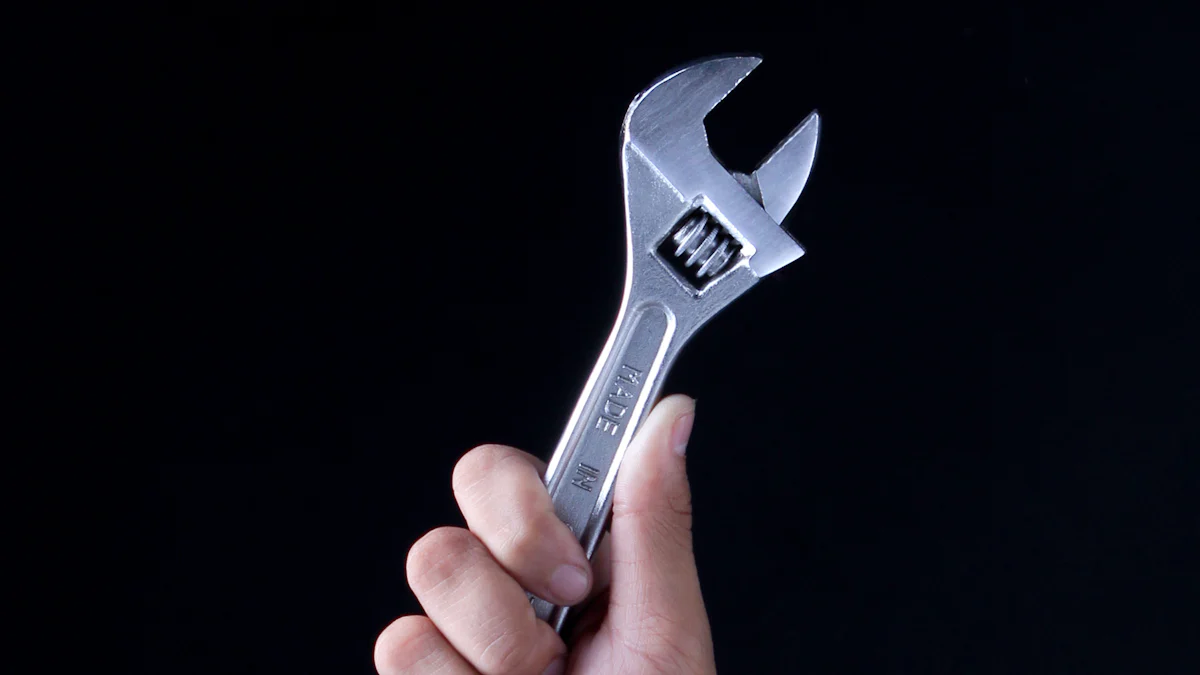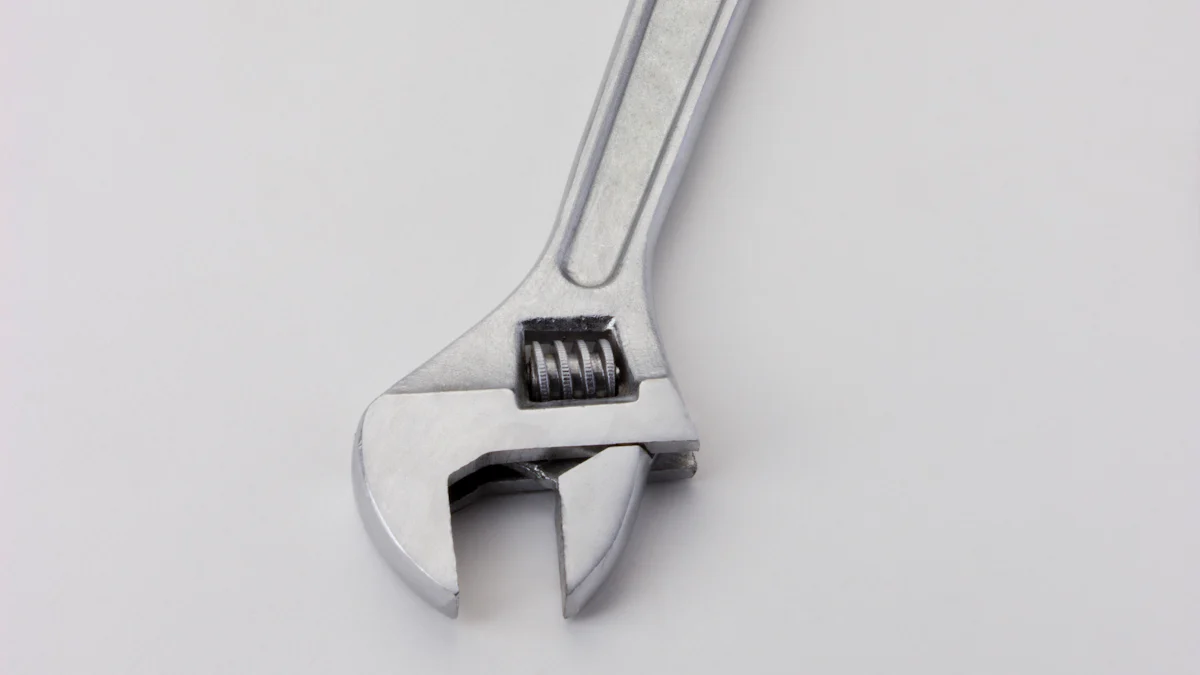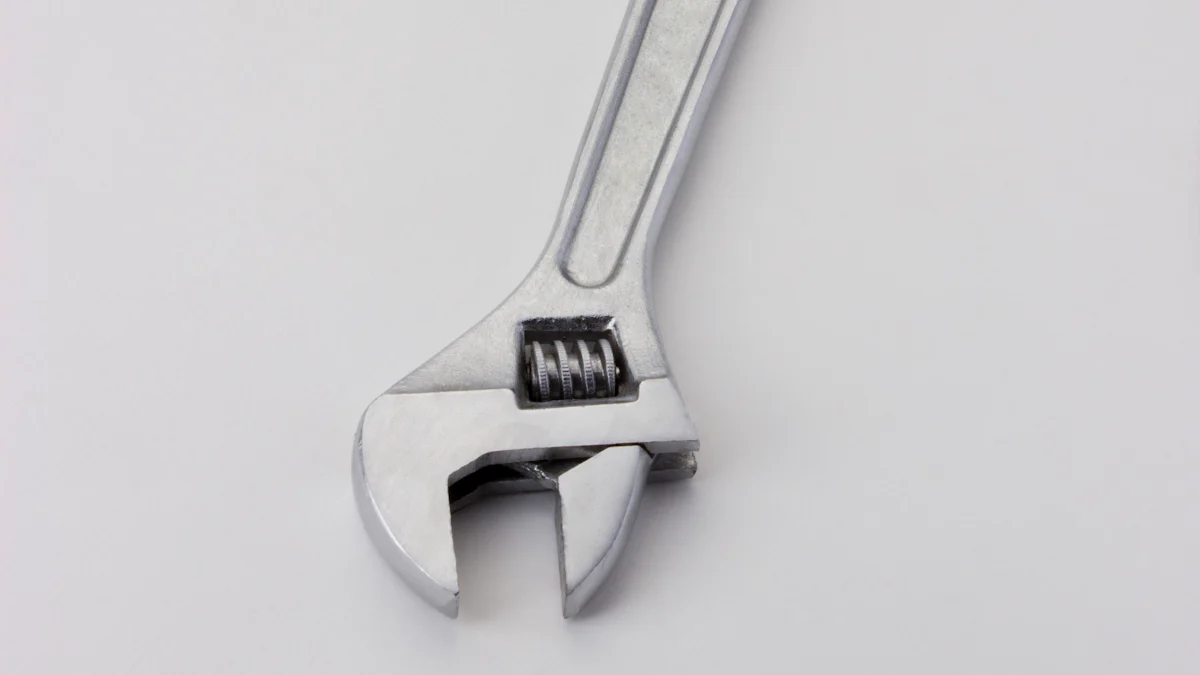
A self-adjusting spanner wrench represents a significant advancement in hand tools. This versatile tool automatically adjusts to different screw sizes, making it indispensable for various applications. Effective use of this self-adjusting spanner wrench ensures efficiency and precision in tasks ranging from automotive repairs to home improvement projects. Mastery of the self-adjusting spanner wrench can greatly enhance productivity and reduce the risk of damage to nuts and bolts.
Understanding the Self-Adjusting Spanner Wrench

Definition and Description
What is a Self-Adjusting Spanner Wrench?
A self-adjusting spanner wrench automatically adjusts to fit various sizes of nuts and bolts. This tool eliminates the need for multiple wrenches in a toolkit. The self-adjusting mechanism allows for quick and easy adjustments. Users can handle different tasks without switching tools. The rotating head and sliding jaw make this possible.
Key Features and Benefits
The self-adjusting spanner wrench offers several key features. The self-adjusting jaws provide a secure grip on nuts and bolts. This feature reduces the risk of slippage. The ratcheting action allows for continuous turning without removing the wrench from the fastener. This action speeds up the work process. The tool’s versatility makes it suitable for various applications. Users can employ it in automotive repairs, home improvement projects, and industrial tasks. The compact design ensures easy storage and portability.
Types of Self-Adjusting Spanner Wrenches
Different Models and Their Uses
Several models of self-adjusting spanner wrenches exist. Each model serves specific purposes. The Wera Joker 6004, for example, covers all metric and imperial dimensions from 7 to 19 mm or ¼” to ¾”. This model suits a wide range of applications. Other models may focus on specific tasks. Some wrenches are ideal for plumbing, while others excel in automotive repairs. Users should select a model based on their needs.
Choosing the Right Wrench for Your Needs
Selecting the right self-adjusting spanner wrench depends on several factors. Users should consider the types of tasks they will perform. A versatile model like the Wera Joker 6004 may be ideal for general use. For specialized tasks, users should choose a model designed for that purpose. The tool’s size range is also important. Users should ensure the wrench covers the sizes of nuts and bolts they commonly encounter. Durability and ease of use are other crucial factors. A well-built wrench will last longer and provide better performance.
How to Use a Self-Adjusting Spanner Wrench

Step-by-Step Instructions
Preparing the Tool
Start by inspecting the self-adjusting spanner wrench. Ensure that the tool is clean and free from debris. Check for any visible damage or wear. A well-maintained tool will perform better and last longer.
Next, familiarize yourself with the wrench’s features. Understand how the rotating head and sliding jaw function. This knowledge will help in making quick adjustments during use.
Adjusting the Wrench
To adjust the self-adjusting spanner wrench, hold the handle firmly. Rotate the head to open the sliding jaw. Align the jaw with the nut or bolt size. The wrench will automatically adjust to fit the fastener. Ensure that the jaw grips the nut or bolt securely.
Applying the Wrench to Nuts and Bolts
Place the adjusted wrench on the nut or bolt. Apply steady pressure to turn the fastener. Use a smooth and controlled motion. The ratcheting action will allow continuous turning without removing the wrench. This feature speeds up the task and reduces effort.
Tips for Effective Use
Common Mistakes to Avoid
Avoid using excessive force. Over-tightening can damage the fastener or the wrench. Ensure that the jaw grips the nut or bolt securely before applying pressure. Loose grip can cause slippage and injury.
Do not use the wrench on damaged or worn fasteners. This can reduce the effectiveness of the tool and increase the risk of slippage.
Maintenance and Care
Regular maintenance will extend the life of the self-adjusting spanner wrench. Clean the tool after each use. Remove any debris or dirt from the jaws and moving parts. Lubricate the rotating head and sliding jaw periodically. This will ensure smooth operation.
Store the wrench in a dry place. Protect it from moisture to prevent rust. Use a tool pouch or case for added protection. Regular inspection will help identify any wear or damage early. Replace any worn parts promptly to maintain optimal performance.
By following these steps and tips, users can maximize the efficiency and lifespan of their self-adjusting spanner wrench. Proper use and maintenance will ensure reliable performance in various applications.
Applications in Different Contexts
Automotive Repairs
Common Uses in Car Maintenance
A self-adjusting spanner wrench proves invaluable in automotive repairs. Mechanics often use this tool for tasks such as loosening or tightening bolts on engine components. The wrench also assists in adjusting suspension systems. Its versatility allows mechanics to work on various car parts without switching tools. This efficiency saves time and effort during repairs.
Benefits in Automotive Work
The self-adjusting spanner wrench offers several benefits in automotive work. The automatic adjustment feature ensures a secure grip on different bolt sizes. This reduces the risk of slippage and damage. The ratcheting action speeds up the process by allowing continuous turning. Mechanics can complete tasks more quickly and with greater precision. The compact design makes it easy to use in tight spaces, which is common in automotive repairs.
Home Improvement Projects
Plumbing Applications
In plumbing, the self-adjusting spanner wrench proves highly effective. Plumbers use this tool to tighten or loosen pipe fittings and valves. The wrench’s ability to adjust to various sizes eliminates the need for multiple tools. This makes it easier to work in confined spaces under sinks or behind toilets. The secure grip provided by the wrench reduces the risk of damaging plumbing fixtures.
DIY Projects
For DIY enthusiasts, the self-adjusting spanner wrench offers great utility. Homeowners use it for assembling furniture, installing fixtures, and performing general repairs. The tool’s versatility allows users to handle a wide range of tasks. The automatic adjustment feature simplifies the process, making it accessible even for beginners. The compact size ensures easy storage in a home toolbox.
Industrial and Professional Use
Heavy Machinery Maintenance
In industrial settings, the self-adjusting spanner wrench is essential for maintaining heavy machinery. Technicians use it to adjust large bolts and fasteners on equipment. The tool’s robust construction ensures durability under demanding conditions. The automatic adjustment feature allows quick changes between different bolt sizes. This increases efficiency during maintenance tasks.
Professional Tips and Tricks
Professionals recommend several tips for using a self-adjusting spanner wrench effectively. Always ensure the wrench grips the fastener securely before applying force. This prevents slippage and potential injury. Regularly clean and lubricate the tool to maintain optimal performance. Store the wrench in a protective case to prevent damage. By following these practices, professionals can maximize the tool’s lifespan and effectiveness in various applications.
Mastering the self-adjusting spanner wrench offers significant benefits. Users can enhance efficiency and precision in various tasks. Practicing with this tool will build confidence and skill. Exploring different applications will reveal its versatility. Try using a self-adjusting spanner wrench in your next project to experience its advantages firsthand.
